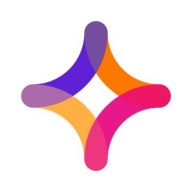

Jitterbit Harmony and TIBCO BusinessWorks are integration platforms in the software industry. Jitterbit Harmony has the edge in user-friendliness and customer support, while TIBCO BusinessWorks leads with advanced features that justify its higher pricing.
Features: Jitterbit Harmony offers intuitive integration capabilities, user-friendly tools, and robust connectivity. TIBCO BusinessWorks provides extensive scalability, advanced process automation, and strong enterprise integration.
Room for Improvement: Jitterbit Harmony could enhance its advanced feature set, scalability for large enterprises, and additional complex process automation tools. TIBCO BusinessWorks may improve by simplifying initial setup, reducing upfront costs, and enhancing user interface simplicity.
Ease of Deployment and Customer Service: Jitterbit Harmony offers quick integration with strong support, making deployment straightforward. TIBCO BusinessWorks, although complex in setup, supports detailed enterprise requirements, backed by comprehensive enterprise-level support.
Pricing and ROI: Jitterbit Harmony is competitively priced, offering significant ROI with an attractive initial cost. TIBCO BusinessWorks is more expensive, but its investment is justified by robust features and scalability, resulting in substantial long-term value for complex integrations.
Customer service is very helpful.
It is not like AWS where I can add memory or more servers.
It is stable, however, every now and then, it just ends.
The learning curve takes time compared to webMethods.
They should ensure that what was working in the previous version must also work in the new version of BW six.
Pricing is for an enterprise application, so the company pays for it with a company license.
It's a great software application for the middleware use cases to connect the front channels to the back ends in a secure and safer way.
When I have an architecture designed to plug in the service itself with BW, it makes things much easier.


Jitterbit Harmony is a comprehensive platform for data integration and API management, enabling seamless synchronization and automation across cloud-based and on-premises applications.
Users leverage Jitterbit Harmony to integrate systems like ERP and CRM applications, simplifying complex data workflows and enhancing automation. It supports efficient data migration and ensures smooth connectivity, handling diverse integration needs and helping streamline business processes. Users emphasize its drag-and-drop functionality and extensive templates, which contribute to its robust performance. However, improvements are needed in data mapping, error message clarity, and documentation, especially when dealing with large data volumes.
What are the key features of Jitterbit Harmony?Companies across retail, manufacturing, healthcare, and finance sectors use Jitterbit Harmony to integrate critical applications and automate workflows. In retail, it connects inventory systems with sales platforms, reducing manual effort. Manufacturers sync their ERP systems with supply chain software, optimizing operations. Healthcare organizations integrate patient management systems with insurance databases, streamlining patient care. Financial institutions use it to connect accounting software with banking systems, ensuring real-time financial data exchange.
We monitor all Data Integration reviews to prevent fraudulent reviews and keep review quality high. We do not post reviews by company employees or direct competitors. We validate each review for authenticity via cross-reference with LinkedIn, and personal follow-up with the reviewer when necessary.